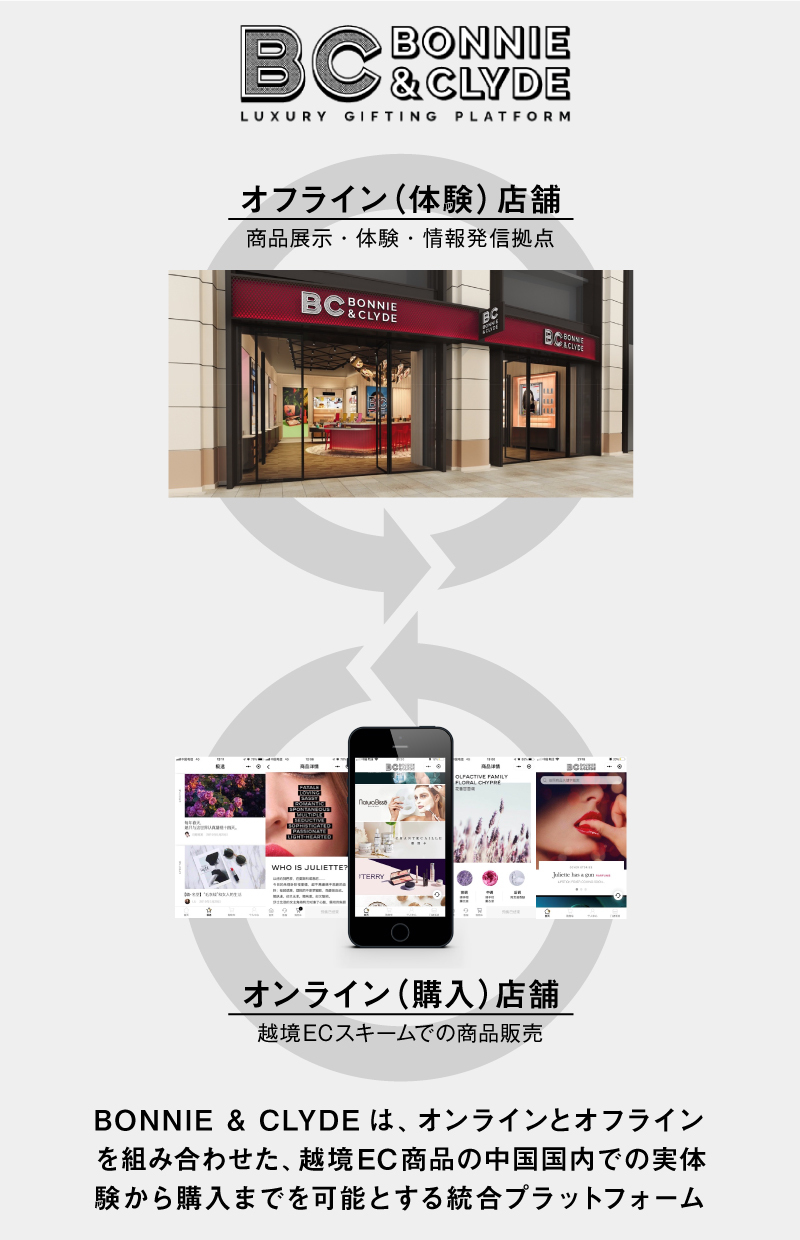With inbound demand halted by the pandemic, many companies are struggling. Amidst this, one business holds the potential to turn crisis into opportunity: "China Cross-Border E-Commerce."
This time, Maki Sakuraba from Dentsu Inc.'s China business specialist team "CXC" explains the latest developments in China cross-border e-commerce, which has become easier to start with more options available, along with various solutions.

CXC (China Xover Center) is Dentsu Inc.'s specialized China business team promoting inbound tourism, cross-border e-commerce, In-Out (Japanese companies entering the Chinese market), and Out-In (Chinese companies entering the Japanese market).
Even when inbound tourism is difficult, "cross-border e-commerce" provides access to a huge market!
Chinese tourists pulling large suitcases with both hands down Ginza's main streets. Chinese chatter filling brand shops. These were common sights in Japan before the pandemic.
The pandemic reduced foreign tourists to nearly zero, dealing a major blow to Japanese companies, particularly the tourism industry.
According to the Japan Tourism Agency, foreign tourist spending in Japan totaled ¥4.8135 trillion in 2019, with Chinese tourists contributing the most at ¥1.7704 trillion. Approximately half of that was spent on shopping.
In other words, the pandemic resulted in the loss of approximately 900 billion yen that Chinese tourists would have spent on shopping in Japan.

Note: This figure includes travel expenditures paid by foreign visitors to Japan (including cruise passengers) during their stay, plus an estimated portion of domestic income included in package tour fees (cruise passengers are counted only for travel expenditures during their stay). International passenger fares paid to Japanese airlines and shipping companies are not included.
Source: Ministry of Land, Infrastructure, Transport and Tourism (MLIT) Official Report, Consumption Trends of Inbound Tourists to Japan, 2019 Annual Report. Chart created by extracting data solely for Chinese tourists.
Compensating for lost inbound sales revenue is a challenge for every company. Amidst this, the focus is on "cross-border e-commerce"—online sales to overseas customers—which we introduce here.
China's e-commerce penetration rate stands at 26.4%, meaning almost nothing is unavailable online. Alibaba's famous "Singles' Day" sale on November 11th, well-known even in Japan, was held on a grand scale even during the COVID-19 pandemic in 2020. According to Alibaba Japan's report, over 250,000 brands participated – the largest number ever – with 31,000 of those being overseas brands.
Over 800 million consumers used Alibaba Group's various services, with the total transaction volume reaching a record high of 498.2 billion yuan (approximately 7.9 trillion yen), a 26% increase year-on-year (※1). Furthermore, in the ranking of total transaction volume by country/region for cross-border e-commerce to China, Japan has secured the top position for five consecutive years since 2016.
※1 26% year-on-year increase = To align with the extended sales period, the calculation period was extended from the previous single day (24 hours) on November 11th to the 11-day period from November 11th to November 25th.
For Japanese companies, e-commerce in China is now an unignorable market. With a population ten times larger than Japan's, a still-high GDP growth rate, and a rapid recovery from the pandemic, China represents a market with significant potential for Japanese businesses.
However, the sheer size of the market also means competition among companies is extremely fierce. Recently, the quality of Chinese products has improved significantly, and there is a noticeable rise in popularity of domestic brands, particularly among Gen Z, under trends like "Guochao" (national trend) and "Guohuo" (domestic goods). While the image of "Japanese products being high-quality, safe, and reliable" still exists, the era when that alone was enough to sell products is over.
Changes are also visible in China's cross-border e-commerce platforms. While established players like "Tmall Global" and "JD Worldwide" maintain high market share and influence, emerging forces deserve attention. For example, "Pinduoduo," strategically targeting users in third- and fourth-tier cities (※2), has shown remarkable growth in recent years.
Additionally, e-commerce on social commerce platforms like "RED" and "WeChat" is gaining attention. Furthermore, e-commerce on "Douyin" (※3) is termed "interest commerce," where content is delivered based on individual interests through recommendation systems. It's described as "products finding people, not people finding products."
※2 "Tier 3-4 cities" = In China, the government assigns cities a tier ranking from 1 to 5 based on size and other factors. Beijing, Shanghai, Guangzhou, and Shenzhen are considered Tier 1 cities.
※3 Douyin = Short-form video platform.
Thus, in cross-border e-commerce,
- the company's category characteristics and situation in the Chinese market
- business objectives and challenges
have expanded. We are increasingly consulted on which platform to choose and how to structure operations.

From cross-border e-commerce + physical stores to leveraging Japan-based KOLs, solutions abound
The Chinese e-commerce environment is constantly evolving. However, during this pandemic, a major challenge for Japanese companies starting cross-border e-commerce is the lack of opportunities for Chinese consumers to actually try products not yet launched in China.
During the boom in inbound tourism, visiting tourists would try products themselves and share their impressions on social media. However, the current situation makes it difficult to establish contact with Chinese consumers.
"If only we could create opportunities for Chinese consumers to try products in China, even through cross-border e-commerce..."
The solution to this demand comes from "BONNIE&CLYDE" (hereafter "B&C"), an offline store operated by USHOPAL, a Chinese brand development support company partnered with Dentsu Inc.
B&C is a solution combining "cross-border e-commerce" with "offline stores." Cosmetics and other products handled through cross-border e-commerce, even those without NMPA (China Drug Registration) approval, can now be displayed in offline stores across China, including Shanghai, and sold via the cross-border e-commerce scheme.

B&C's physical stores in China serve not only as sales locations but also as platforms for information dissemination and marketing, creating touchpoints with Chinese consumers.
Currently operating four stores in Shanghai, with plans to open one new store each in Beijing, Chengdu, and Shanghai within 2021.

B&C Store Example (Inside Jing'an Kerry Center)
Furthermore, for the challenge of "wanting Chinese influencers to introduce products but being unable to travel to China due to the pandemic and thus unable to communicate directly," there is the solution of "utilizing Chinese influencers residing in Japan."
As of 2021, approximately 780,000 Chinese nationals reside in Japan. Among them are numerous influential KOLs (Key Opinion Leaders) and KOCs (Key Opinion Consumers) who actively share information targeting China.
Residing in Japan, they maintain tens of thousands to hundreds of thousands of followers in China and actively share "information about Japan" online. CXC has also established cooperative relationships with influential Chinese KOLs residing in Japan, creating a framework for product promotion, sales, and market research on social media.
Our recommendation is social commerce. For cross-border e-commerce, start small and iterate through trial and error rather than pursuing grand strategies!
When considering China business, including cross-border e-commerce, "speed" is crucial.
For example, while Japanese cosmetics product development takes 1.5 to 2 years of careful progress, in China, quantitative analysis of big data on best-selling products enables new product launches within just six months.
This speed is possible partly because the entire country is advancing digitalization, but above all, it boils down to "fast corporate decision-making."
Why is decision-making so fast?
"First, try it out. If it doesn't work, redo it and make it better."
This mindset is key.
To compete with the speed of Chinese companies, which enhance quality through repeated trial and error, Japanese companies must also adopt swift decision-making and streamlined processes.
For cross-border e-commerce, instead of "building a flawless strategy through endless verification," there's also the option of "prioritizing speed and starting small."
While opening stores on major e-commerce platforms like Tmall or JD.com can present hurdles due to strict conditions and costs, social commerce platforms, which are gaining momentum recently, offer relatively easier entry points. More Japanese companies are starting cross-border e-commerce on WeChat and Douyin (TikTok) in China.
Next time, we'll discuss Douyin (TikTok), which recently launched cross-border e-commerce services.
For inquiries about the solutions introduced here, or other questions and consultations regarding China business, please contact us at:
Business Transformation Division, Dentsu Inc. China Xover Center
< dentsucxc@dentsu.co.jp>










